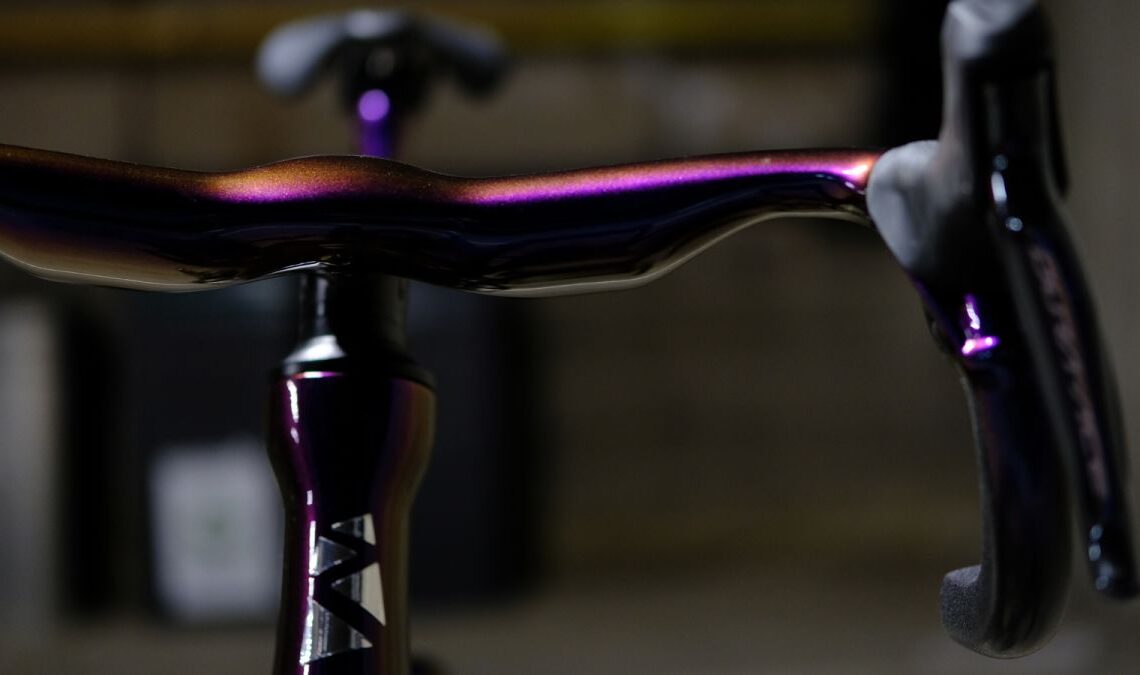A spate of new UCI rules are coming into force on January 1, including is a new regulation regarding the minimum width of a rider’s handlebars.
The change now restricts the width of handlebars on road bikes to 350mm when measured outside to outside at the drops.
The rule, Article 1.3.012 of the Clarification Guide Of The UCI Technical Regulation, which pertains to the overall dimensions of a bike, previously only restricted the maximum width of a bicycle, citing a maximum width of 500mm, which directly related to the maximum authorised width of bars.
Following the update, the rule now states “The maximum width of 500mm for the bicycle directly relates the maximum authorised overall width (outside-outside) of handlebars. The minimum overall width (outside-outside) of traditional handlebars (road events) and base bars (road and track events) is limited to 350mm.”
On the road, there has been a slow trend in recent years towards narrower bars in a bid to decrease one’s surface area to become more aerodynamic. Riders such as Dan Bigham, Victor Campanaerts and Jan Willem Van Schip have constantly pushed the boundaries, with the latter making headlines in 2019 with his ultra-narrow handlebars.
The trend has also made its way into bike design. In 2021, Ribble launched the Ultra SLR aero bike with the option to add ‘Pro’ bars that measure just 33cm at the hoods, flaring to 37cm at their widest. More recently, Trek has followed suit with the Madone SLR, which comes with handlebars that flare by 1.5cm from the hood to the drop. Trek says that by making the hoods narrower, the improved rider position is worth 10 watts of aerodynamic improvement.
The newly amended rule appears to be a safeguarding measure against riders taking the narrow-is-aero mentality too far, but it doesn’t look as though it would affect any riders’ existing approaches. Even Jan Willem Van Schip’s bars, which were track drops that measured 32cm at the hoods, would have been legal due to flaring out to 36cm at the drops. The same cannot be said for the Speeco bars he used when he was thrown out of the Baloise Belgium Tour, however, for they fell foul of the separate ‘forearms-on-bars‘ rule.
Somewhat related is another new rule that affects a rider’s maximum reach, albeit once again it doesn’t appear to affect any riders’ existing positions. Rule 1.3.022 has been amended to state that “In no case shall the front…
Click Here to Read the Full Original Article at CyclingNews RSS Feed…

